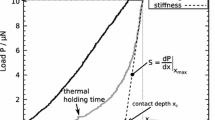Abstract
The conditioned and wet tensile strength resp. modulus of solvent-spun and viscose-type cellulose fibres was correlated with their crystallite and amorphous orientation factor. It was found that the extrapolation of these tensile properties to the maximum degree of orientation results in identical values of the tensile strength resp. modulus in the conditioned and water swollen state. Proportional to a decreasing orientation factor the loss of strength and modulus by swelling increases. Additionally, a positive correlation was found between the wet tensile strength resp. modulus and the intensity of the interference of the equatorial small-angle x-ray scattering measured in the swollen state. This interference is caused by the elementary fibrils. The intensity of this interference is a measure for the fibrillar character of the swollen fibre structure. The fibrillability of the fibres suspended in water correlates positively with the crystallite orientation factor.
Similar content being viewed by others
References
BISFA, 92nd Session of the Subcommittee “Terminology”, Paris, May 23, 1989
Mc Corsley CC (1978) Belgium Patent 868 735; Mc Corsley CC, Varga JK (1979) US Patent 4142913
Chanzy H, Nawrot S, Pérez S, Smith P (1983) International Dissolving and Specialty Pulps, TAPPI Proceedings, 127
Firgo H (1991) 30. Internationale Chemiefaser-Tagung, Dornbirn, Austria
Turbak AF, El-Kafraway A, Snyder F, Auerbach A (1981) US Patent 4302252
Selim J-F, Huttunen J, Turunen O, Fors J, Eklund V, Ekman L (1983) Finnish Patent 834029
Götze K (1967) Chemiefasern nach dem Viskoseverfahren. Springer-Verlag, Berlin, p. 354
Kratky O, Porod G (1955) In: Stuart HA (ed), Die Physik der Hochpolymeren, Springer-Verlag, Berlin, Vol 3, p 125
Meyer KH, Misch L (1937) Helv Chim Acta 20: 232
Stuart HA (1955) In: Stuart HA (ed) Die Physik der Hochpolymeren. Springer-Verlag, Berlin, Vol 3, p 334
Hermans PH, Weidinger A (1948) J Appl Phys 19:491
Hermans PH (1946) Contribution to the Physics of Cellulose Fibres. Elsevier Publishing Comp, Amsterdam, New York, p 151
Novikova S, Ivanova R (1970) Khim Volokna 1970:32–34
Okajima S, Kobayashi S (1953) Bull Chem Soc Japan 26:235
Porod G (1948) Acta Physica Austriaca III/I:65–81
Krässig H, Kitchen W (1961) J Polym Sci 51:123–172
Lenz J, Schurz J, Wrentschur E (1988) J Appl Polym Sci 35:1987–2000
Heikens D, Hermans PH, van Velden PF, Weidinger A (1953) J Polym Sci 11:433
Lenz J, Schurz J, Wrentschur E (1988) Das Papier 42:683–690
Author information
Authors and Affiliations
Rights and permissions
About this article
Cite this article
Lenz, J., Schurz, J. & Wrentschur, E. Properties and structure of solvent-spun and viscose-type fibres in the swollen state. Colloid Polym Sci 271, 460–468 (1993). https://doi.org/10.1007/BF00657390
Received:
Accepted:
Issue Date:
DOI: https://doi.org/10.1007/BF00657390




